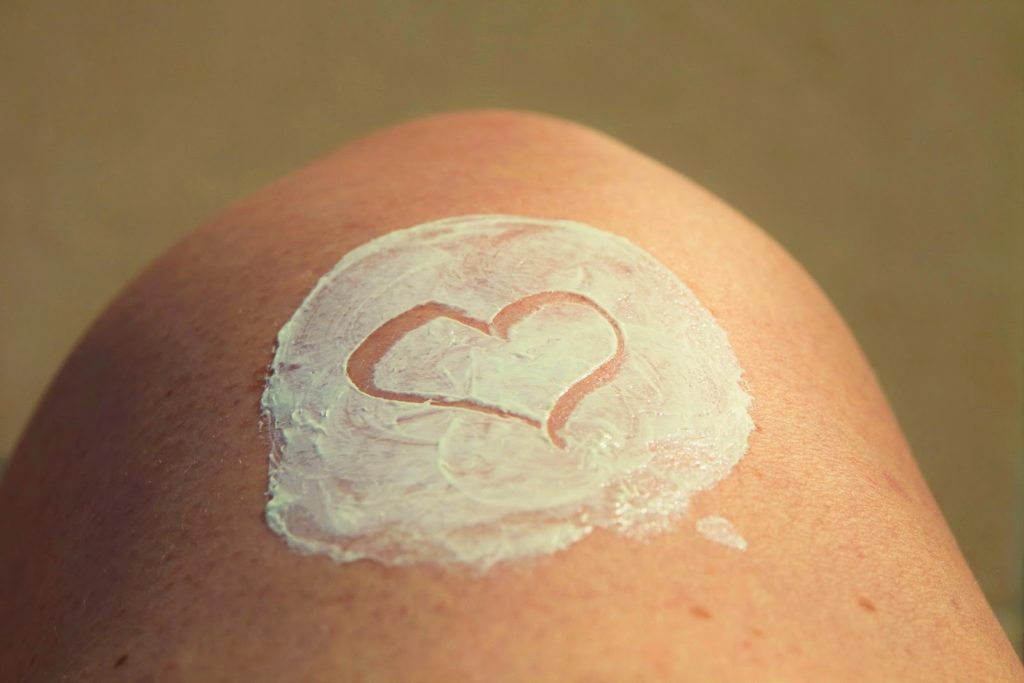Have you ever spent extra time at the store trying to decide which sunscreen to purchase? We try to protect ourselves from the Sun’s ultraviolet (UV) rays to minimize the risks of contracting skin cancer or photoaging (changes to skin caused by UV exposure), yet never think twice about the effects of these products on marine organisms.
Popular brands of sunscreen may be more harmful than others to marine life, according to the results of a study published recently in Scientific Reports. This study, conducted by a group of Italian scientists, investigated three brands of sunscreen (two popular brands and one patented eco-friendly brand) not only for their ability to protect human skin cells from the Sun’s UVA radiation, but also for their effects on a sea urchin species, Paracentrotus lividus. This sea urchin species is dominant in coastal areas along the Eastern Atlantic Ocean and Mediterranean Sea, and is commonly used in ecotoxicological studies, which makes it an ideal organism to examine the effects of sunscreen on marine ecosystems.
Marine organisms, especially those around tourist hotspots like coastlines, are increasingly threatened by ingredients used in pharmaceutical and personal care products. Compounds in sunscreen, in particular, commonly accumulate in aquatic organisms over time, and can promote viral infections in bacteria and symbiotic algae of tropical corals. Hard to pronounce chemicals such as benzophenone-3 or cinnamates are active ingredients that protect humans from absorbing UV rays, while inactive chemicals such as titanium dioxide or zinc oxide act as filters that limit the penetration of UV rays. Preservatives and moisturizers, among other additives, are frequently used in popular sunscreen brands; collectively, these ingredients can have detrimental effects on sea creatures.
The researchers cultured human dermal fibroblasts (skin cells) in the lab and exposed them to UVA radiation. They found that that all sunscreen brands had similar protective capabilities. They then exposed sea urchin embryos and larvae to increasing amounts of the sunscreens (10, 20, and 50 microliters) and increasing lengths of time (up to 24 hours) to determine their effect on the organisms.
For the popular sunscreens, dubbed “A” and “B”, the percentage of embryos with developmental abnormalities increased significantly over time for all three concentrations used. The worst effects of these popular sunscreens revealed deformities that rendered embryos completely unsuitable for survival. The eco-friendly brand, “C”, revealed significant differences in abnormalities after embryo exposure to sunscreen after three hours, but after a full 24 hours revealed no significant differences. Sea Urchin larvae, on the other hand, were affected by all three sunscreens at all concentrations tested when first exposed. Over 24 hours, popular sunscreen “B” was the most harmful, as it blocked development in most larvae observed, though some larvae treated with sunscreens “A” and “C” were found to have abnormalities throughout the experiment. The researchers found that while the embryos were affected by exposure to sunscreen, the larvae were most susceptible to it.
While all three sunscreen brands offered the same protection against UVA- induced damage for human life, the popular brands contained chemical filters and preservatives that affected the growth and development of sea urchins. The eco-friendly product, on the other hand, had minimal effects. Hence, eco-friendly sunscreens that keep both human and marine life happy, need to be developed for commercial use.
The next time you shop for sunscreen, think beyond SPF, and take a look at its contents – are they screening you from the sun but scarring marine life?


